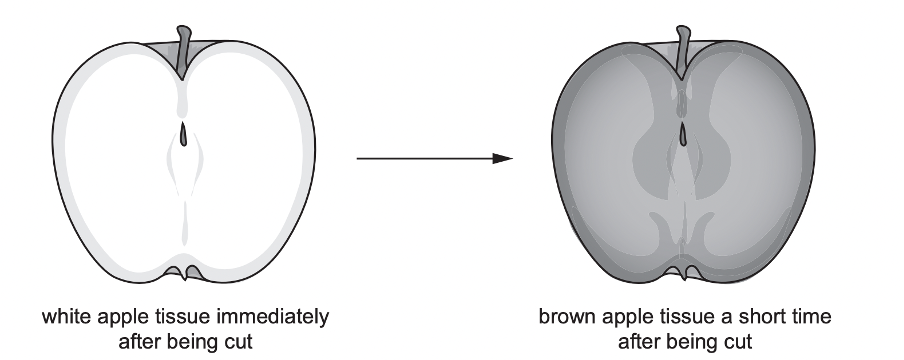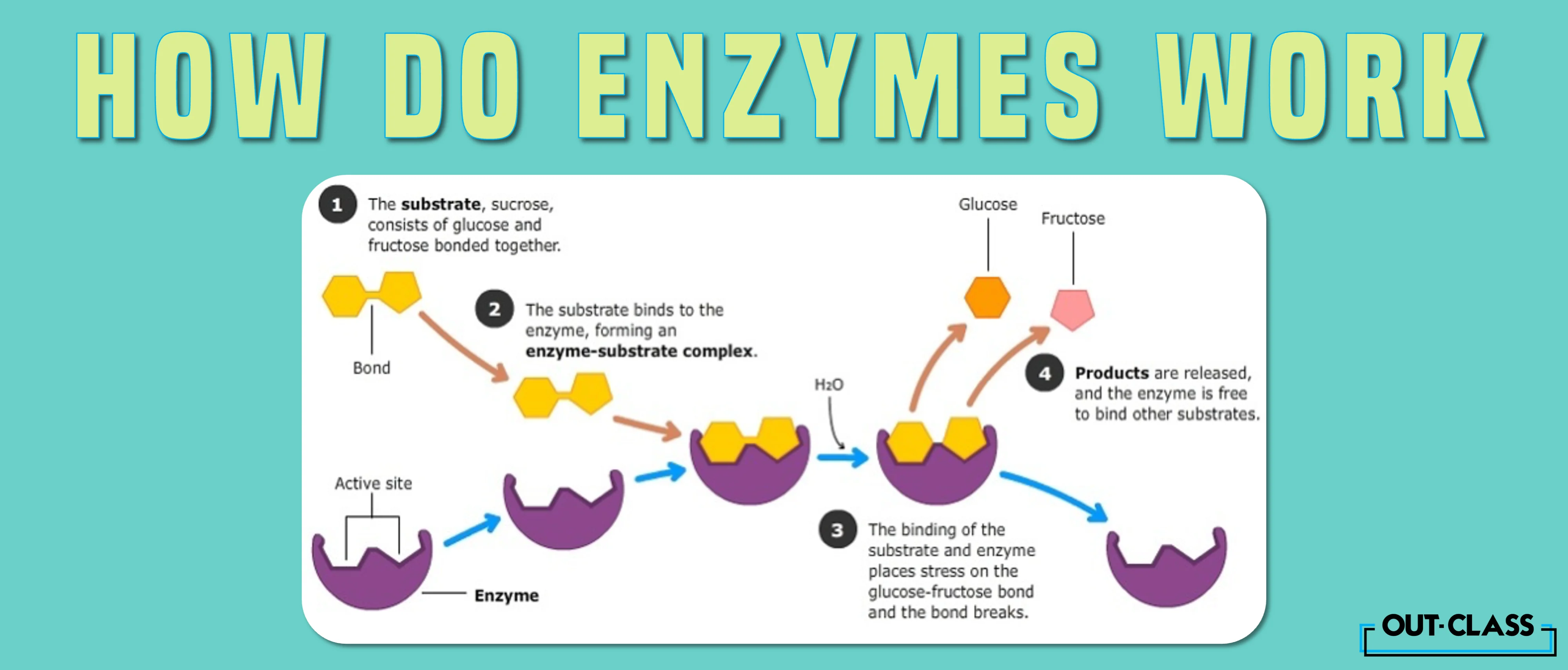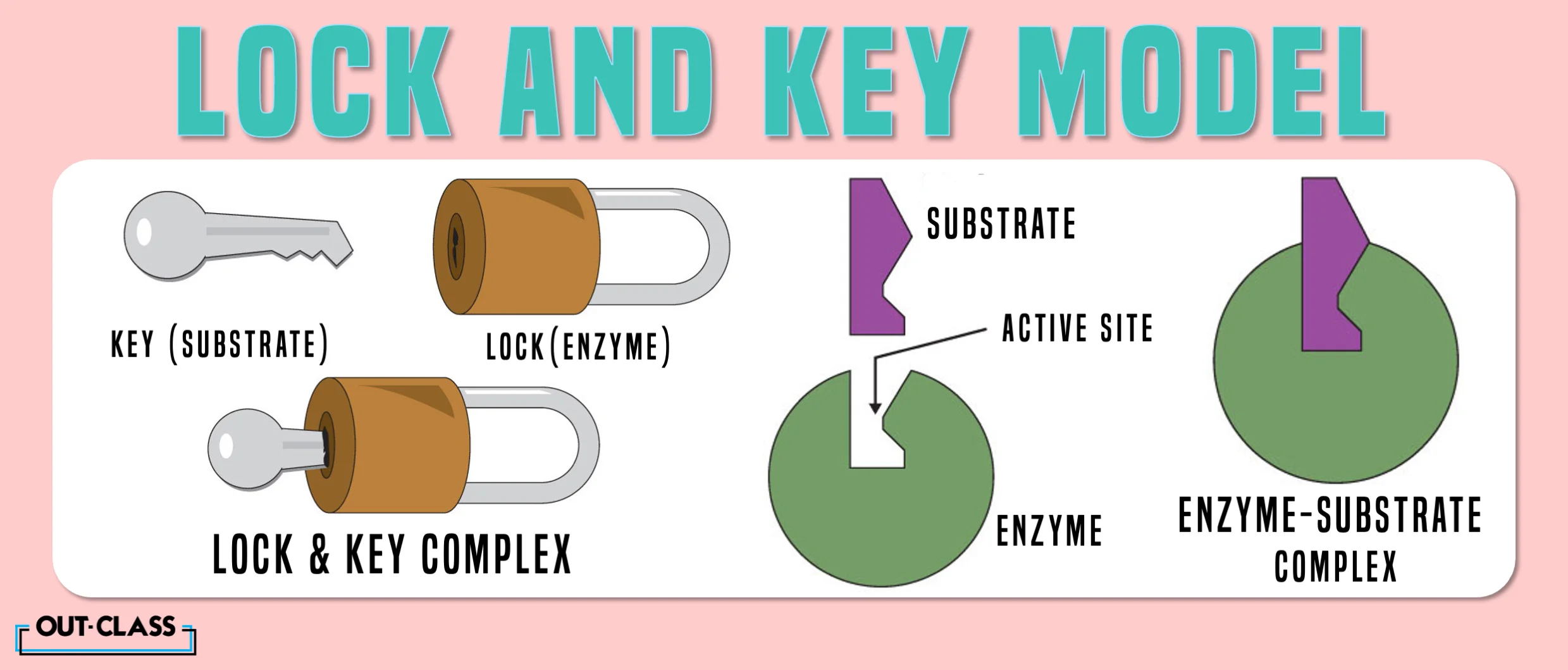Reading about enzymes in IGCSE or O Level Biology syllabus and books might leave you confused about how they work. The “lock and key model enzyme” has an elegant and simple explanation. Read on below to find out.
"Just as a key fits a lock, enzymes and substrates are built for each other.”
What is the Lock and Key Model?
In order to explain how enzymes work, we need to be aware of two important terms:
-
Enzymes: Proteins that help speed up chemical reactions.
-
Substrates: The chemical compounds that are processed by enzymes (e.g. they can be broken down)
Related: Enzymes
Basics of the Lock and Key Model of Enzyme Action
The basics of the lock and key model enzymes is one of the simplest models of enzyme action to understand. The lock and key model of enzyme action is similar to how we open a lock:
-
Only one specific key fits and opens a given lock
-
Similarly, only the correct substrate can fit a given enzyme, allowing it to work
*Note: This unique pairing between enzymes and substrates maintains precision in biological processes. Specific enzymes can focus on their specific reactions and this improves efficiency in maintaining cells!
Using Lock and Key to Describe an Enzyme:
A good way to understand enzyme action is through the lock and key hypothesis:
-
The substrate can be thought of as a key (substrate = key)
-
The enzyme can be thought of as the lock (enzyme = lock)
-
When the substrate enters, it “activates” the enzyme, which starts processing the substrate
-
Other substrates will not be able to “activate” the enzyme, as their shape won’t match
Wrapping-Up
In conclusion, enzymes speed up (catalyze) some key chemical reactions in organisms. The theory of lock and key model enzymes says that a given enzyme only interacts with its precise substrates.
We hope that by reading this concept guide, you developed a better understanding of O Level or IGCSE Biology. Another way to clear your concepts is by attempting and practicing with IGCSE or O Level Biology past papers.
Stay tuned to Out-Class for more study guides!
Most Common Repeated Questions:
Unlock the secrets to acing your IGCSE/O Level Biology exams with a sneak peek into the most frequently asked questions that have graced the pages of past papers!
- Explain the ‘lock and key’ hypothesis of enzyme action using a named example (5) [Oct/Nov 2021]
- When an apple fruit is cut open, the cut surface of the apple tissue quickly becomes brown and is less likely to be eaten. This change in colour is shown in the diagram.

The change in colour of the apple tissue is due to a series of chemical reactions. An enzyme called PPO acts as a catalyst for one of these reactions. The colour change can be prevented by placing the cut surface of apple tissue in boiling water for a short time immediately after the fruit is cut. Explain this observation using the lock and key hypothesis of enzyme action. (4) [Oct/Nov 2020]
FAQs:
Q. What are enzymes?
Enzymes are proteins that act as catalysts, speeding up chemical reactions in living organisms. They facilitate these reactions without being consumed or altered themselves.
Related: Enzymes
Q. What is the lock and key model of enzyme action?
The lock and key model is a hypothesis explaining how enzymes interact with substrates. It compares the specificity of enzyme-substrate interactions to a lock that only opens with the correct key. In this model, enzymes (locks) have specific active sites that perfectly fit their substrates (keys).
Q. How does the lock and key model maintain precision in biological processes?
The lock and key model ensures precision by allowing only specific substrates to bind with an enzyme's active site. This specificity prevents enzymes from interacting with inappropriate substrates, maintaining accuracy and efficiency in biological reactions.





